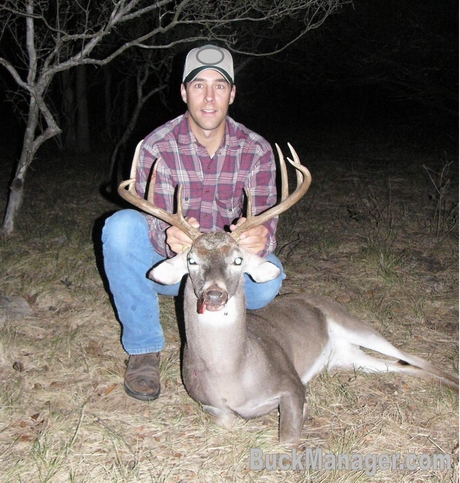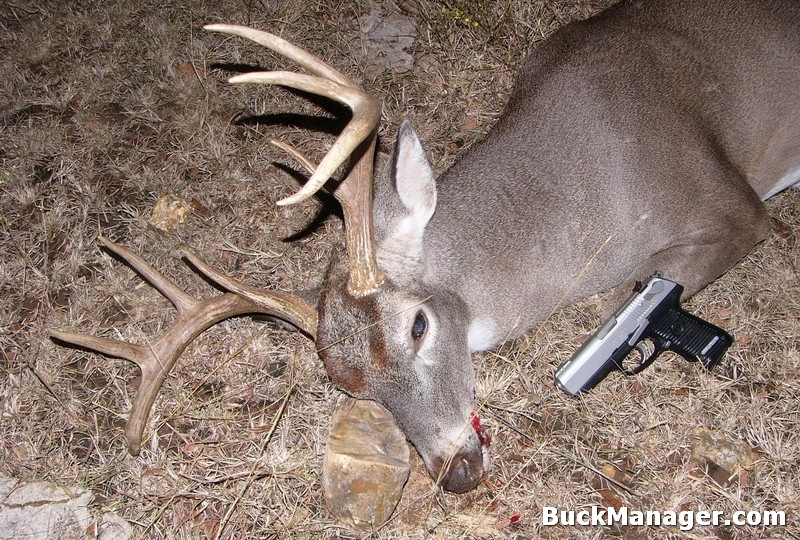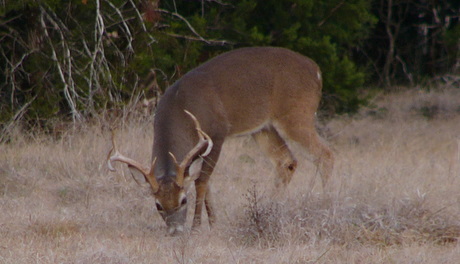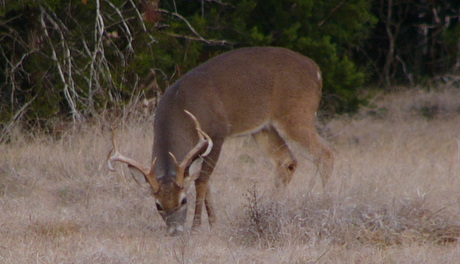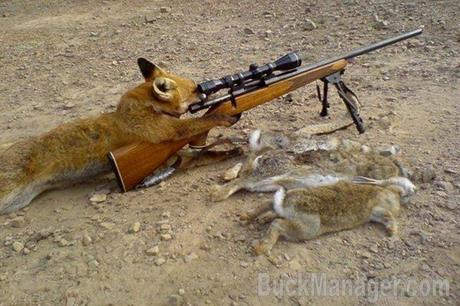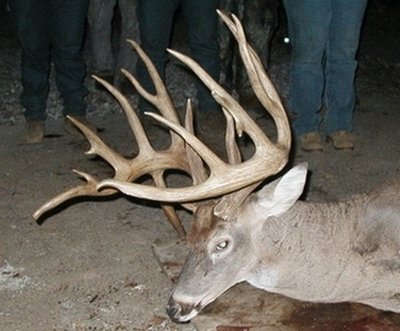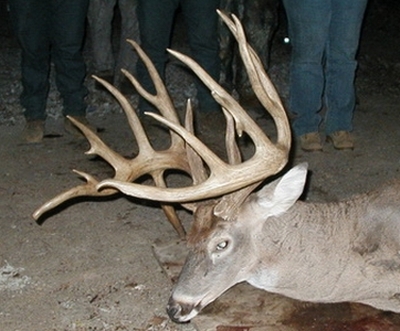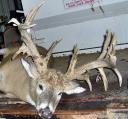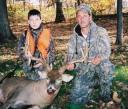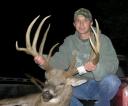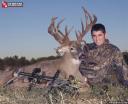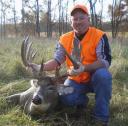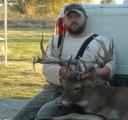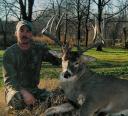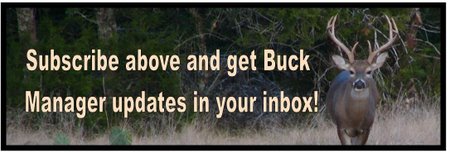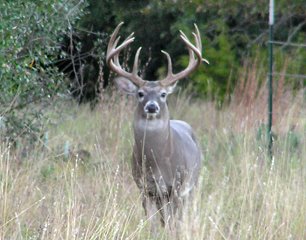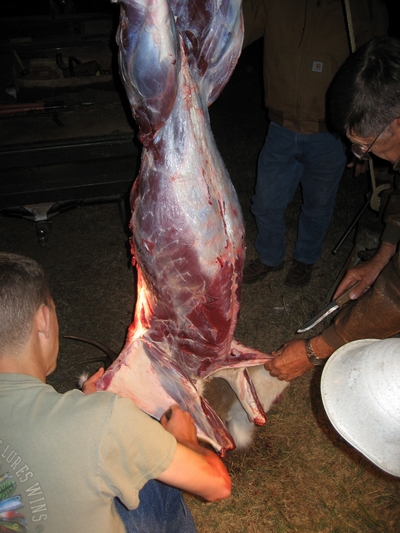Rifles and archery equipment are the two of the most widely used tools for hunting white-tailed deer, but there is an alternative to both that many of you may have never considered. That’s right, handguns! Handguns add another element to deer hunting that is somewhere between rifle and bow hunting, especially when using traditional pistols not specifically designed for white-tailed deer hunting. These types of handguns demand close-range interaction between the hunter and game and also require hunter skill in their use.
Using a handgun to bag a white-tailed deer brings along some of the challenges that archery hunters face, mainly trying to get as close as possible to a deer without them detecting you. The 8 point, 5 1/2 year old buck pictured here was harvested using a .45 caliber Ruger P97DC at 15 yards while he was trailing a hot doe during the breeding season.
“I was sitting in a ground blind when a doe stepped out at about 85 yards. She was crossing an opening and I figured she was just traveling through. However, once she got about 30 yards away from the brush, I saw a mature buck following her, so it looked that the breeding season was still underway in the area. Based on the direction she way traveling I knew if she’d continue to work my way that I’d have a potential shot. The doe continued down the brush line and kept feeding towards me, and the mature buck was ever-so-slowly closing the gap between both her and I.
The doe kept feeding in my direction and the buck was following suit, without much hesitation. The two deer were closing the distance. When the buck was about 20 yards out, it looked like he was going to come even closer, as the doe was only about 10 yards from me, so I was going to let him keep coming. When he was at 15 yards, I knew it was time to make my move. I aimed right for the lungs and slowly squeezed the trigger — the shot connected! The buck lurched forward ran full-out for about 60 yards before I saw him collapse in some brush.
The whole time there was a 10 point, 2 1/2 year old buck standing 25 yards in front of me. The mature 8 point buck was hoping to gain breeding rights to the doe in estrus, but from a deer management standpoint I’m hoping the young 10 point buck will do what big boy wanted to do. This harvest made for a great hunting experience, put some meat on the table and hopefully resulted in overall herd improvement. This was my first big game animal of any species with a pistol, and he’s a nice whitetail buck. Can’t wait to get back out and try it again.”
